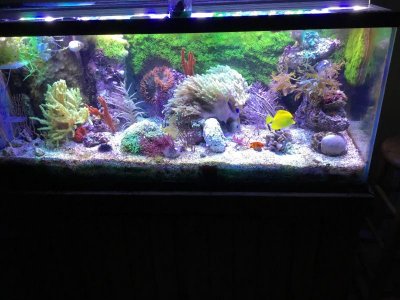Twin,
Having previously read Volume 3 of Julian Sprung & Charles Delbrick, the title rings true. "œArt, Science and Technology". There is some good art work going on here.
With respect to sponges, I like them and I did turn out the lights on my 25 year old 30G mud/macro refugium. The pods and worms like it just fine with the lights out. I removed macro, put eggcrate spacers on top of mud then added dry rock, then added seeded rock. It looks very good to me. The refugium has never looked better. It cleaned itself up with lights off.


